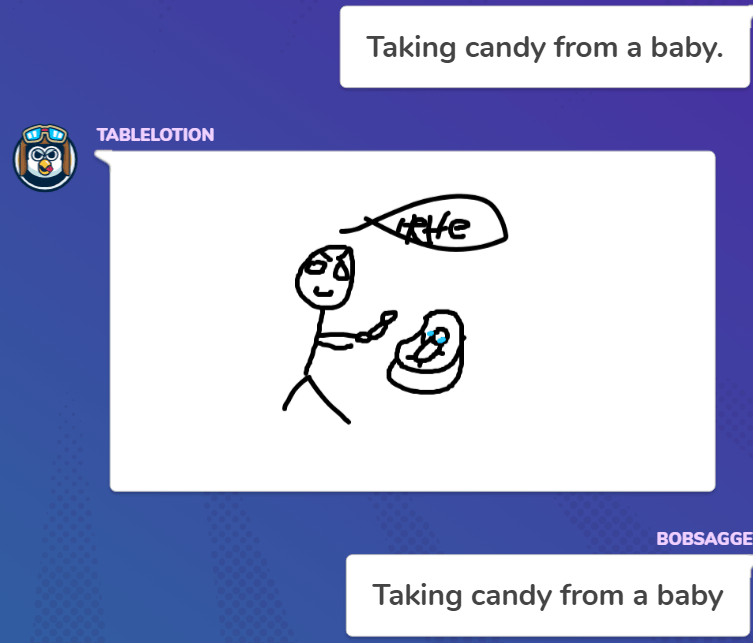Game Debrief
Gartic Phone is a social game rooted in expression, narrative, and most importantly: fellowship. Published in 2020 by Onrizon. Being accessible to any person who can draw, the goal of the game is a creative spin-off of telephone. But how does it compare to our game?
To begin, it would be best to go over the various mechanics deployed and dynamics created in Gartic Phone to get its unique aesthetic. Gartic Phone offers several unique modes, but I opted to lead a session of its standard game type, which goes as follows:
- All players enter a prompt of their choice in which others will have to draw
- Players receive a random prompt that isn’t their own, and do their best to draw the prompt within the time restrictions
- Players will then receive a new drawing and guess what the prompt for the drawing was
- Steps 2 and 3 are repeated until every drawing has been seen by every player
Much of the time, players will be in a voice or video call with one another whilst playing this game (which is now even built directly into the popular socialization app, Discord). The mechanics of free expression lead to outlandish prompts and even more outlandish drawings. The disparity of skill in drawing ability is often mitigated and overlooked due to the fellowship aspect of the game alongside the target audience and the end aesthetic. Artistic talent is undeniably helpful, but can reduce the “telephone” dynamic of the game that promotes confusion, mistakes, and misinterpretation as an avenue for fun. Overall, the addition of art as a medium spices up the original idea of telephone and is executed in a manner in which I have no complaints off the top of my head. There is a lot of future direction for expansion and the game feels as fresh as the players make it.
Comparison
Our game shares some traits with this game but is quite different in approach. Our game’s core mechanic is compounding dance moves to chain together to make an error. This is the “telephone” aspect of the game, but isn’t derived from the same dynamics set in Gartic Phone. There isn’t open interpretation of the dances being done. The dancer simply decides what dance to do. That being said, there remains the aspect of open expression when selecting the dance. This is much like the prompt selection stage of Gartic Phone. However, in this stage we see another contrast in approach. For Gartic Phone, the resolution of disparities in skill happens not only before (collectively, by opting in to easier/harder prompts) but during the game as guesses and drawings wildly change what is required of the player. Much of the disparity in our game is front-loaded and compounds on each turn. Players are always expected to be creative and add a dance move to the chain, with randomly drawn cards to offset disparity and randomized music choices to create a more enjoyable environment and dynamic between players. There are still some worries on how these efforts may play out for groups of random people where the barrier-to-entry may be a bit higher for our game compared to something like Gartic Phone, which needs to be further explored.



